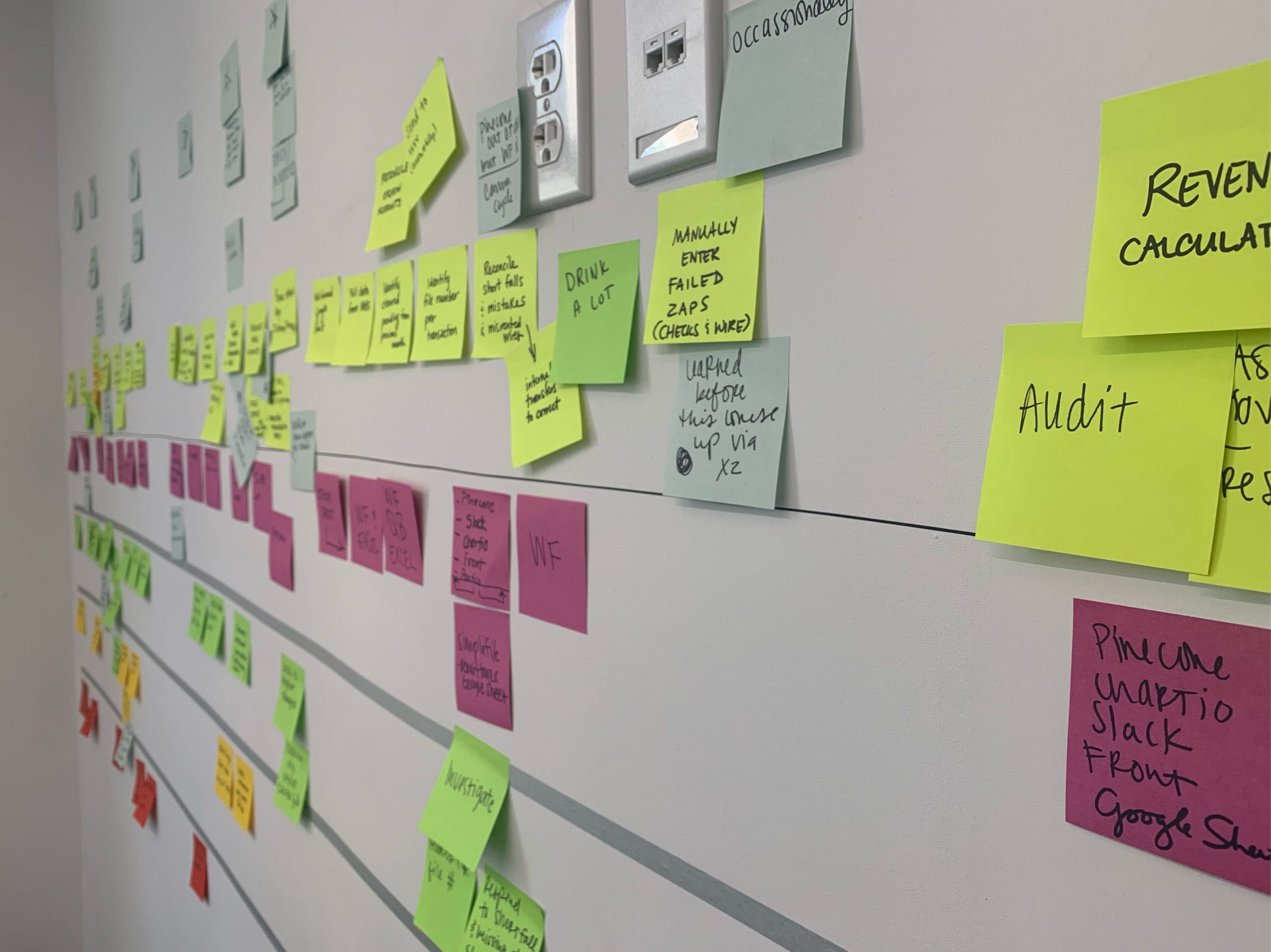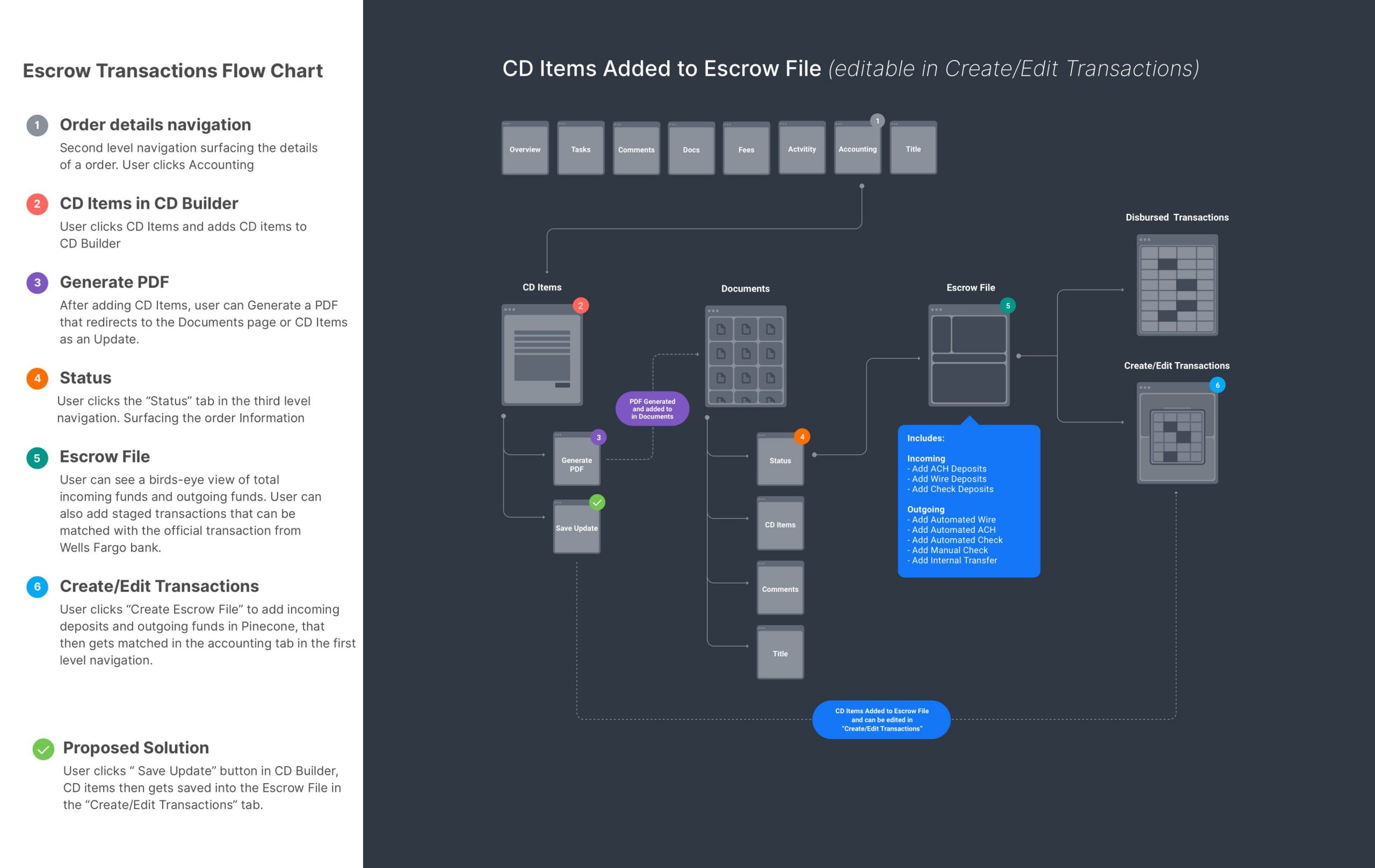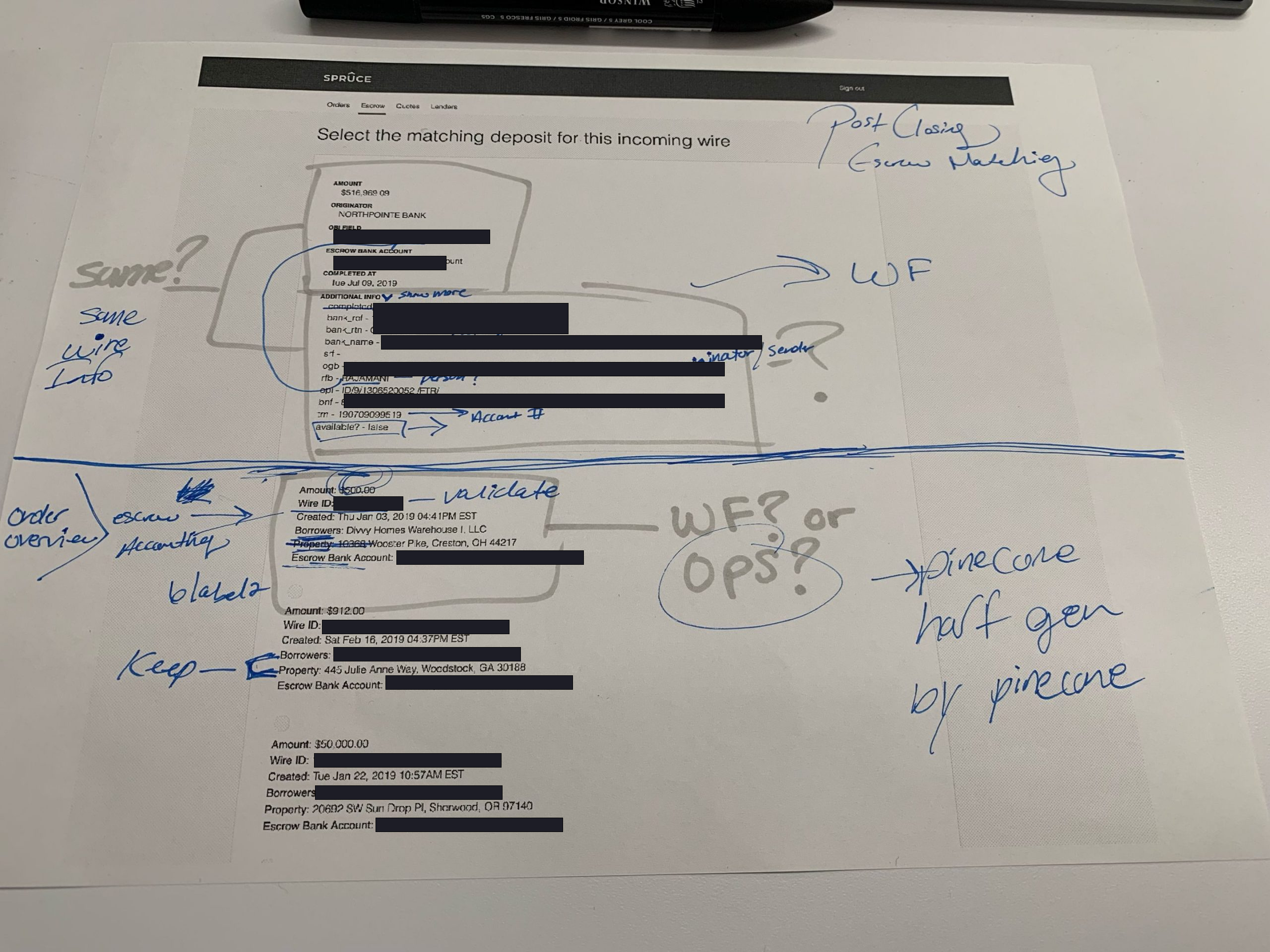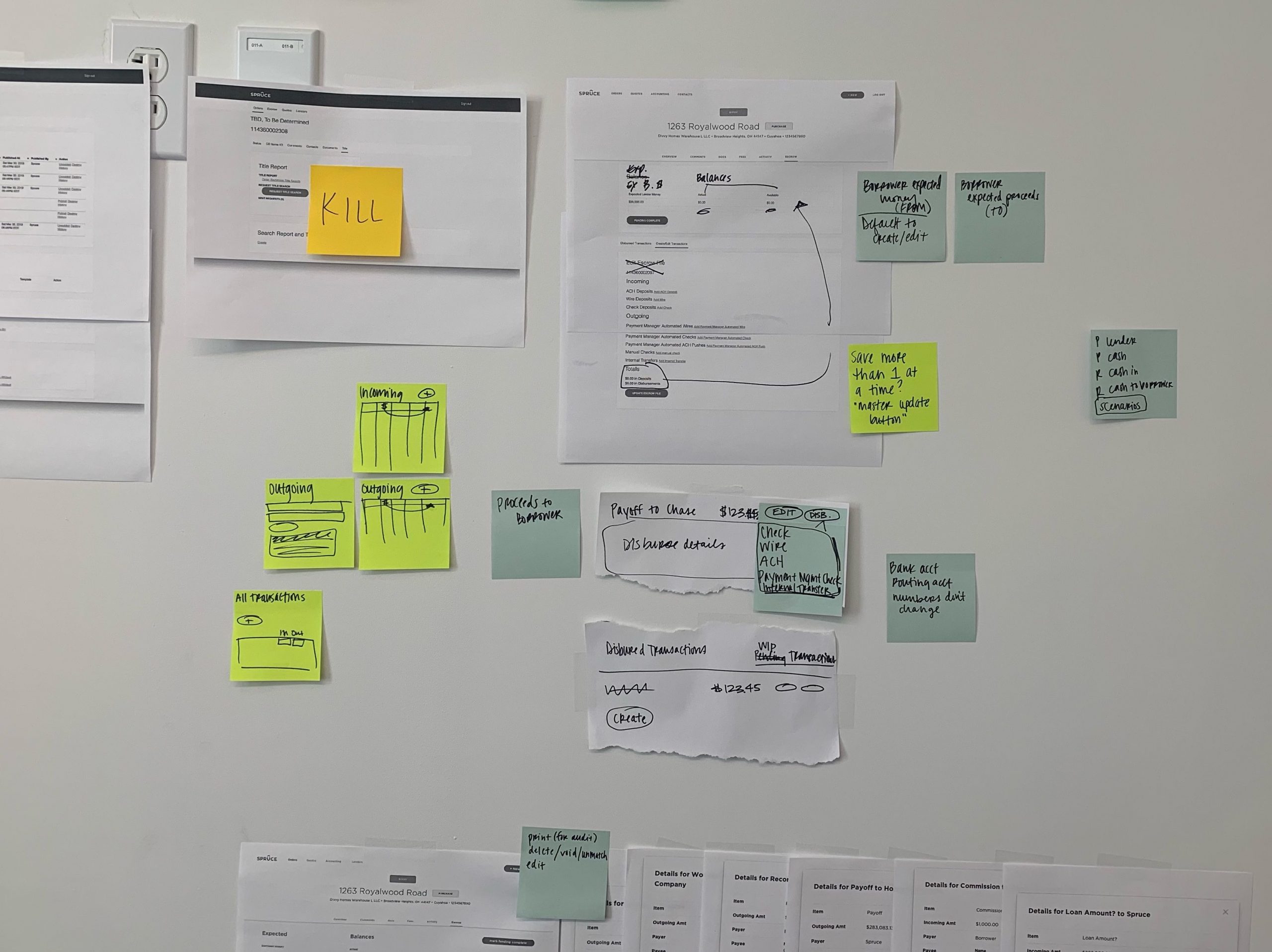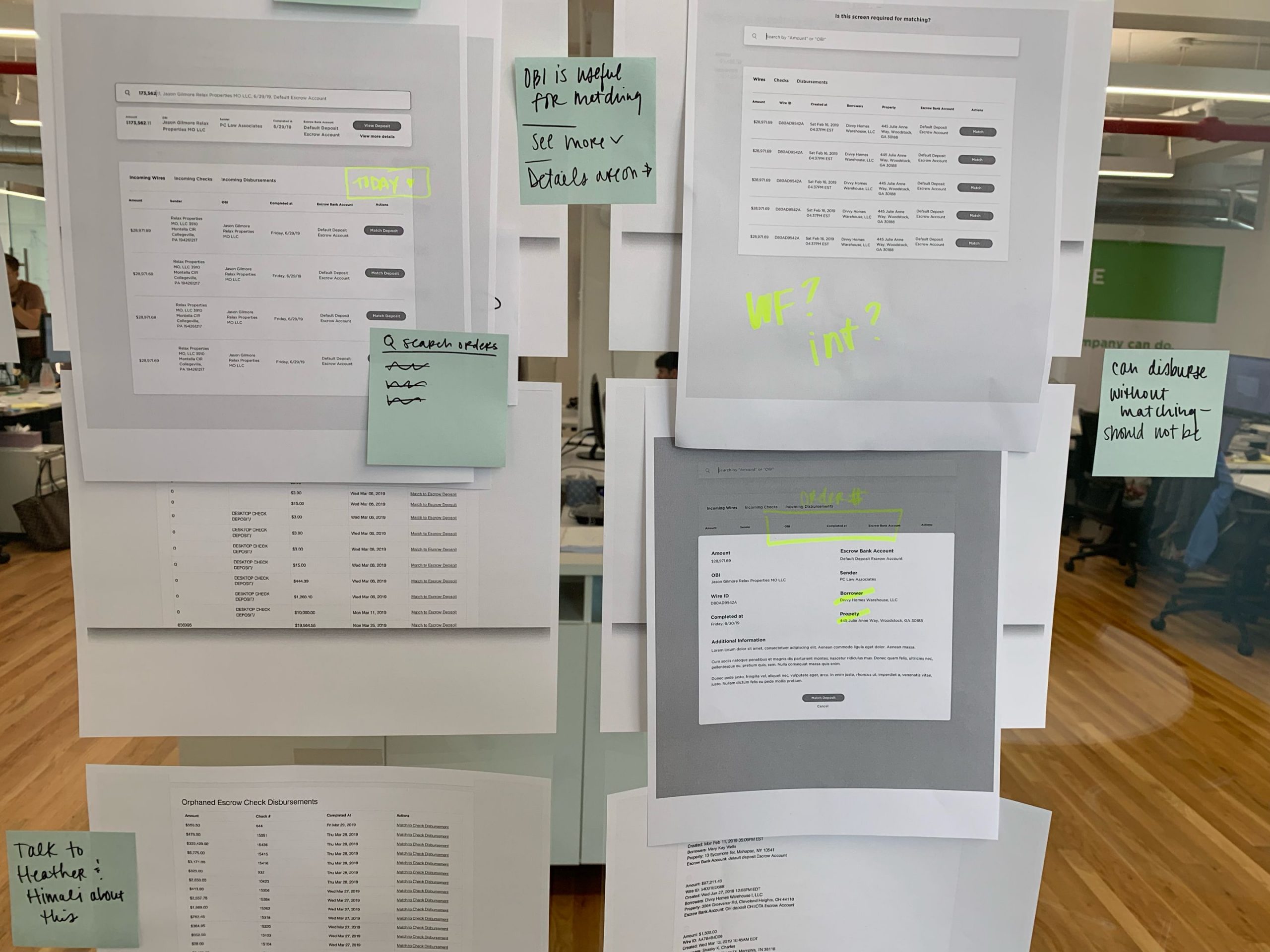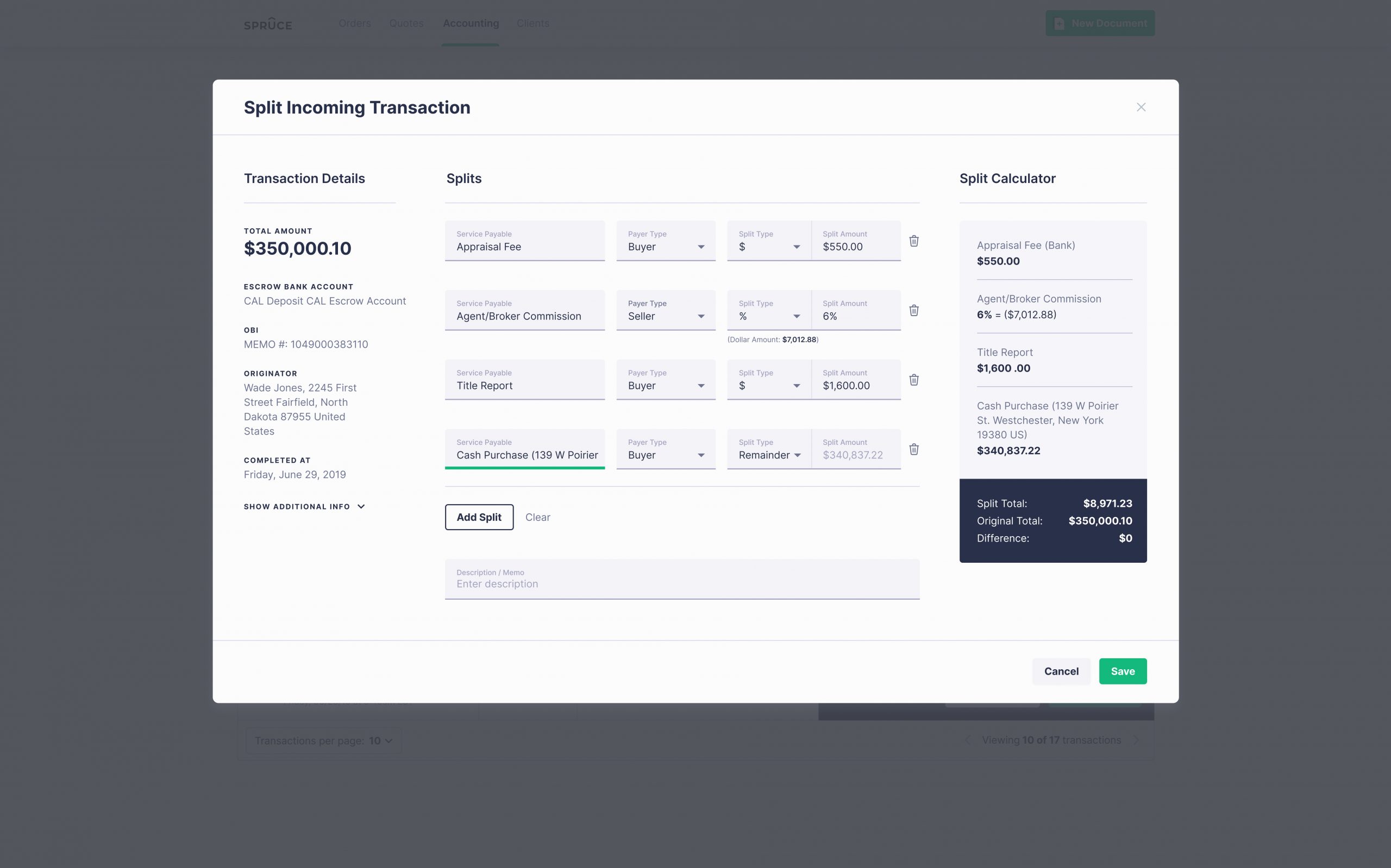Solving Spruce’s $250K Problem
Spruce is a real estate tech (prop-tech/fintech) platform that simplifies title and closing services across the U.S.
I led the end-to-end redesign of escrow transactions — eliminating $250k+ in annual inefficiencies, cutting manual work by 37%, and speeding reconciliation by 94%.
(Zillow acquired Spruce in Sept. 2023)


